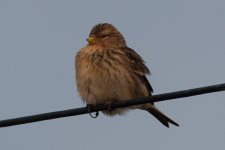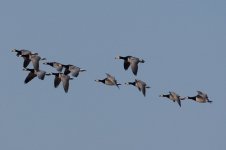Excellent, some good discussion!!
Out of interest, Tideliner, is the research you mention published anywhere on the web? Would it be possible to have a full summery put on here? Discussion about the local, national and international position of these types are interesting, but I do not always know where to locate them, which is why I ask questions.
Josh, interesting take on logic! It is possible to see these without disturbing the birds and maybe there would be the opportunity to educate! Do you stop yourself from going to look at a bird on your patch, or would you explain this away as being 'completely different'?

But then again I wouldn't expect anything different from youo

, as you are are the cusp of a dichotomy in this birding game

(I presume the word 'get' was carefully chosen!). Do you still carry a pager so you know where to avoid:king: (sorry really should stop this now!):eat::-O:eat:
Agreed, Stu, but then again they might soon become a separate species (or will they all be lumped again with Pink-feet, as you vaguely suggested

)
Edit: with all my smilies, Josh, this looks like the type of text I read with my daughter!!





